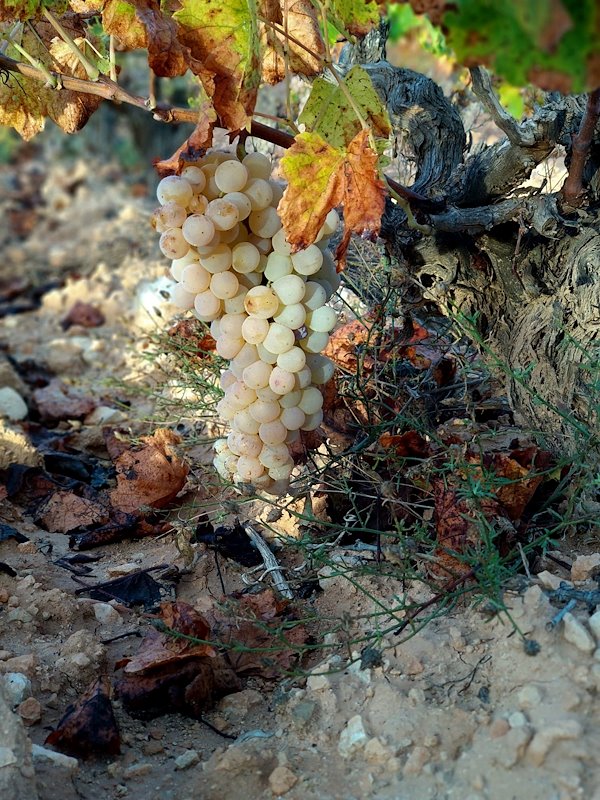Today we're going to take a look at a unique grape variety from the west of Valencia in Spain: Tardana. It's a variety that deserves our full attention, as it carries the history, character and flavours of the Mediterranean terroir, along with a touch of modernity that is attracting more and more lovers of natural wines.

Tardana grape variety
Tardana, also known as Planta Nova or Tortozón (no Tortosi), began life as a table grape. It has been grown in the Requena region for centuries. It is also found in the Vall d'Albaida, where Cris Vanyó de Cos a Cos is a worthy representative. What sets it apart is its late ripening - and that's why it's called Tardana! This grape is harvested much later than the others, until December, when it has had time to soak up the sun and aromas. The result? Natural acidity and concentrated aromas to give us a unique freshness, even in intense weather.
Tardana is a thick-skinned, robust variety, capable of withstanding Mediterranean summers. The grapes are rather large, cylindrical, compact with one or two wings; the berries are medium-sized, spherical or slightly ellipsoidal. What's most interesting is that Tardana can be processed in a number of ways. For those looking for pure, straightforward flavours, it is often vinified in stainless steel vats to retain all its freshness. But, and this is the most interesting aspect, some wineries choose to make it with maceration, known as vin orange, which gives it an even richer, more complex dimension. Winemakers such as Mariano de Cueva, Verónica Romero, Pigar and Escuadra are masters of this art, producing a Tardana that shows great depth without altering the liveliness of the grapes. For them, this maceration technique has become the most common approach, revealing aromas of ripe fruit, herbs and spices.
A Tardana made using classic vinification methods, i.e. direct pressing or free-run wine such as Romano de Sexto Elemento, offers notes of white fruit, such as pear and green apple, accompanied by a touch of citrus and white flowers. When macerated, this profile becomes more complex, with a texture and aromas of tea, dried fruit and a delicate tannic presence. This is a wine that combines freshness and depth, to be drunk young, and does not need to be kept for years. It can also be susceptible to oxidation, so it's best to drink it quickly once the bottle has been opened.
The winegrowers we promote are committed to natural viticulture and work the Tardana in a way that fully respects its character. The harvest is a testimony to the terroir and each winemaker has his own way of bringing out the qualities of the grapes. The bottles are a real invitation to discover a unique local wine.
Tardana represents the charm of slow drinking, the character of the Valencian terroir and a palette of flavours as diverse as the choosen winemaking techniques. It can be used on its own or with other white grapes such as Tortosi or Macabeu, or with black grapes to make a claret. This variety surprises and seduces with its freshness, so if you ever find yourself with a bottle of Tardana, let yourself be tempted!
